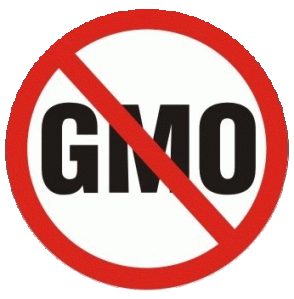Blog Archives
Do you know whats in your food?
Do you know how much of your food is Genetically Modified? 
- 94% of soybeans are a GMO crop
- 75% of HT Cotton
- 73% BT Cotton
- 72% BT Corn
- 65% HT Corn
This data was obtained by the USDA National Agricultural Statistics Service
The FDA does not require the labeling of genetically modified foods. I think this is very misleading, the American Public has a right to know if their food is GMO or not.
What is a GMO?
Organisms in which the genetic material (DNA) has been altered in a way that does not occur naturally, allowing selected individual genes to be transferred from one organism into another and between non-related species(also called gene-slicing).
I found out about GMO crops my senior year of High School in my AP Environmental Science class. I was astonished that I had not heard anything about it and was appalled that there was no way I could tell what foods contained genetically modified ingredients.
Why did it all start?
Genetically engineering food started in the 1950s
- To improve product
- Extended shelf life
- Greater Quantity of food (on less land)
- Resistant to pests (costs less)
- Can grow in undesirable conditions
Monsanto is the dominant company Currently over 90% of Soya in the United State is Monsanto’s. The problem is these big companies control the political actors who have the power to impose regulations on agriculture.
Why the Controversy?
The FDA did not study the impacts of GM food in the environment or on peoples health. Companies that proposed this gave results that they were substantially equivalent. In 1995 Greenpeace started to campaign to stop the release of genetically engineered food and have raised awareness of the issue.
- Toxins & Poisons to humans and animals
- Increased Cancer Risk
- Food Allergies
- Damage to Food Quality & Nutrition
- Antibiotic Resistance
- Increased Pesticide Use
- Genetic Pollution
- Damage to Beneficial insects and soil fertility
- “Superweed” and “superbugs”
- Creation of new viruses and bacteria
- Bio-invasion
Monsanto vs. Family Farmers
Monsanto has the right to sue farmers for patent infringement if Monsanto’s transgenic seed or pollen should land on their property. Once released into the environment, genetically modified seed can contaminate and destroy organic seed for the same crop. For example, soon after Monsanto introduced genetically modified seed for canola, organic canola became virtually impossible to grow as a result of contamination. Monsanto has sued farmers in the United States and Canada, in the past, when their patented genetic material has inadvertently contaminated their crops. There are many documentaries on this issue. On Hulu.com you can watch one streaming live called Food Of the Future, I would highly recommend it if you have time.

GMOs in other countries
All around the world GMOs have been banned or restricted in the import, distribution, sale, and utilization. These Include: Algeria, Egypt, Sri Lanka, Thailand, China, Japan, Philippines, The European Union, The United Kingdom, Brazil, Paraguay and many others.
Public Outcry
The American public has slowly started to realize the potential and dangers and wants labeling. A survey in July 2003 showed 92% of Americans supported biotechnology labeling.
What Congress Has Done?
The Genetically Engineered Safety Act
- This bill would therefore, require the FDA to screen all GE foods through the current food additive process to ensure safety for human consumption and require that unique concerns be explicitly examined. Furthermore, the bill places a temporary moratorium on pharmaceutical crops and industrial crops until all regulations required by the bill are in effect.

The Genetically Engineered Technology Farmer Protection Act.
- This legislation gives farmers the ability to save seeds and seek compensation for failed GE crops, prohibits genetic engineering designed to produce sterile seeds and places all liability from negative impacts of GE organisms squarely upon the biotechnology companies that created the GE organism
The Genetically Engineered Food Right to Know Act
- It would require all food that has been genetically engineered to be labeled as such and would require periodic testing of these foods to assure the accuracy of their labels
- Despite the public’s desire for more legislation because of the control GM companies have over congress the bills do not get passed.
What Needs To Be Done
- The Scientific research on GM foods in almost non-existent and it is difficult to tell what the true effects are until this is done.
- The public has urged officials to label these, but few have gotten behind the wide public support for labeling them. Labeling them would allow for the public to make an informed decision about the food they are eating.
- The Non-GMO Project, a non-profit multi-stakeholder collaboration committed to preserving and building sources of non-GMO products, educating consumers, and providing verified non-GMO choices.
- This website provides a guide to shopping GMO free!
- They believe that everyone deserves an informed choice about whether or not to consume genetically modified organisms.
Do you know what you are eating? Will you make an effort to eat GMO free?
“High-tech tomatoes, Mysterious milk. Supersquash. Are we supposed to eat this stuff? Or is it going to eat us?
~Annita Manning



